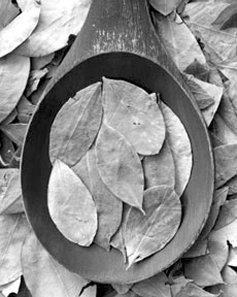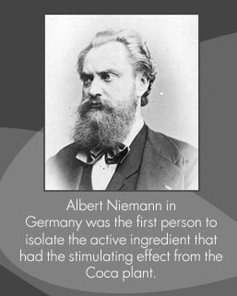Cocaine History: 1500—1800

Cocaine is a white, powdery derivation from the coca plant which grows wild in South America. Cocaine currently has a well-deserved reputation as a dangerous drug, but in the very beginning, its use was fairly benign.
When the Spanish first came to South America in the 1500s, they found that the indigenous people in Bolivia, Peru and Colombia chewed the leaves for their mildly stimulating effect. They had already been using coca leaves for thousands of years at this point. A coca-leaf chewing native could subdue his appetite and work longer hours in the high altitudes where these plants were common. The intoxicating content of these leaves is so low that it not likely that this habit would have resulted in euphoria or other mental effects.
The Spanish explorers in South America were motivated to send the riches of the region to their patrons back home. They were particularly interested in the gold and silver deposits in Peru and Bolivia. The Spanish recruited or forced the native population to work in the mines and enforced the constant chewing of these leaves to make the operations more profitable.
With the constant use of these leaves, the workers could produce more gold and silver bullion to send home to Spain. Workers did not need as much food or rest when they chewed the leaves non-stop. But this wore out their bodies much faster than the way they used these plants before the arrival of the Spanish. At the same time, the coffers of Spanish royalty and explorers swelled with gold and silver bars.
The use of coca leaves was restricted to South America until a method of refining the stimulating ingredients was developed. When coca leaves were shipped back to Europe, they deteriorated so much on the journey that they were ineffective. In the 1800s, a great enough volume of leaves were exported to Europe that refining processes were able to isolate the active ingredient and enable other uses to be developed.
Commercial Use of Cocaine

Albert Niemann in Germany was the first person to isolate the active ingredient that had the stimulating effect that would become so popular. He was the one who named this new substance “cocaine.” In 1860, he noted, “its solutions have an alkaline reaction, a bitter taste, promote the flow of saliva and leave a peculiar numbness, followed by a sense of cold when applied to the tongue.” Niemann died the next year, apparently after his experiments developing mustard gas as a war weapon caused fatal damage to his own lungs.
In 1863, Corsican chemist Angela Mariani concocted Vin Mariani, a mixture of wine and cocaine that was sold as a stomach stimulant, pain reliever, appetite suppressant and anemia treatment. Each ounce contained six milligrams of cocaine. The mixture also contained 17% alcohol. Soon after, he released Elixir Mariani, which had three times the cocaine content, followed by other products in various forms, all containing cocaine.
But kings, queens, and celebrities praised Vin Mariani over all his other products. Mariani collected testimonials from the likes of HG Wells, Jules Verne, Thomas Edison, the Queen of Portugal, the King of Spain, Pope Leo XIII, President William McKinley, sculptor Auguste Rodin, and many others. In 1885, as former President Ulysses S. Grant lay dying of throat cancer, he was reported to have been sipping Vin Mariani as he wrote his memoirs.
An ad from the time states that Vin Mariani “Nourishes, Fortifies, Refreshes, Aids Digestion, Strengthens the System.”
Mariani’s wine-cocaine mix was soon copied by others wanting to cash in on this trend, including a recipe from John Pemberton in the US. This pharmacist in Atlanta sold Pemberton’s French Coca Wine, infusing his drink with higher quantity of cocaine than Mariani.
Pemberton did well with his French Coca Wine until the Ku Klux Klan demanded that alcohol be banned from Atlanta. In 1885, Pemberton was forced to reformulate his drink by replacing the alcohol with soda water. He called the new drink Coca-Cola.
In response to the many competitors who appeared on the market, Mariani upped his cocaine content to from 6 mg to 7.2 mg per ounce.
Just after the turn of the century, the dangers associated with cocaine were becoming more apparent. By 1906, both Vin Mariani and Coca-Cola were required to remove this active ingredient from their drinks.
Resources:
- http://www.ncbi.nlm.nih.gov/pubmed/17687926
- http://www-pub.naz.edu:9000/~jschmid2/templates/narrow_copy(1).htm
- http://www.ncbi.nlm.nih.gov/pmc/articles/PMC1297313/?page=1
- http://www.euvs.org/en/discover/man-behind-the-bottle/mariani
See More Cocaine History:
 ®
®